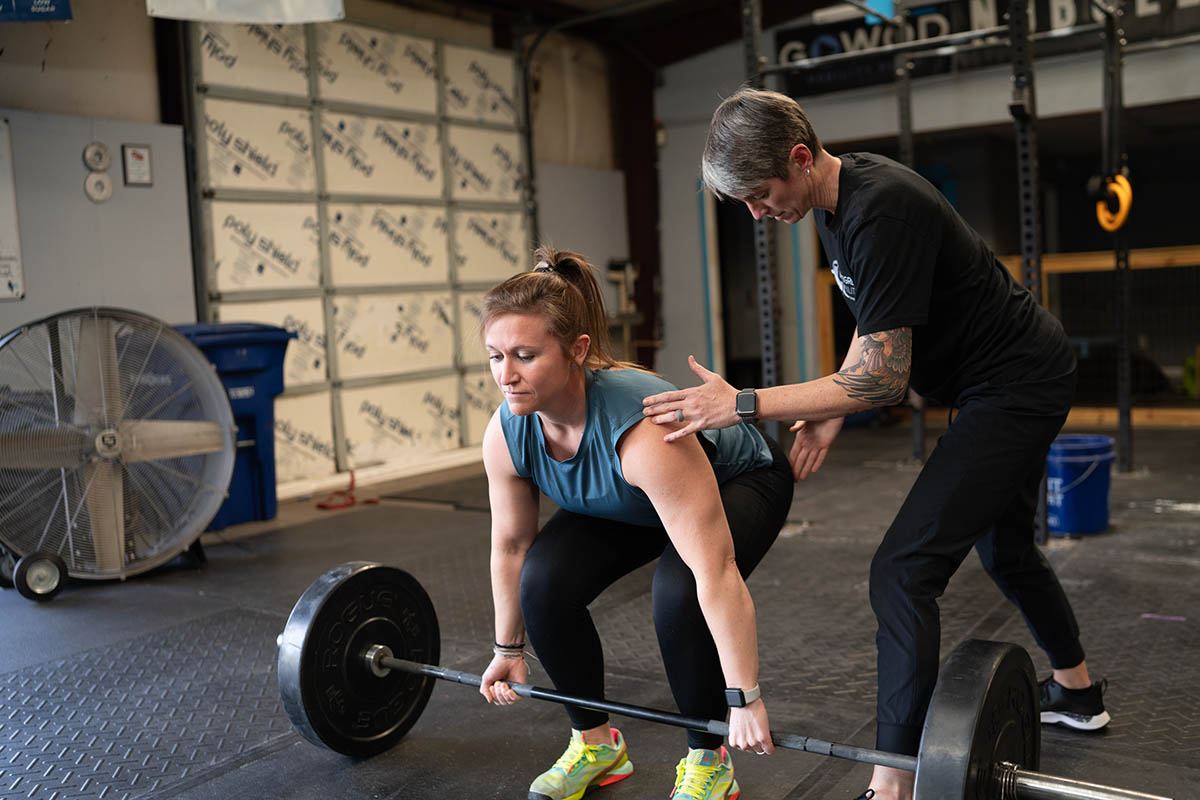Introduction
Anterior hip pain, a discomfort located at the front of the hip, is a common ailment that affects individuals of various ages and activity levels. This pain can significantly impact one’s mobility and quality of life, making everyday activities such as walking, climbing stairs, and even sitting for long periods, challenging. Understanding the causes, symptoms, and treatments of anterior hip pain is essential for those seeking relief and a return to their regular activities.
This comprehensive guide aims to provide valuable insights into anterior hip pain, exploring its diagnosis, management, and prevention strategies to help sufferers find the relief they need.
What is Anterior Hip Pain?
Anterior hip pain refers to discomfort or pain located in the front area of the hip and groin, often presenting a challenge for clinical diagnosis due to its gradual onset. This condition can manifest as a sharp, stabbing pain during certain movements or a dull, constant ache. The pain might also radiate down the thigh towards the knee, complicating the differential diagnosis and treatment plan.
Anterior hip pain is not a condition in itself but a symptom of various underlying issues, including muscle injury, that can range from acute injuries like hip fractures to chronic conditions affecting the hip joint and its surrounding structures, such as the joint capsule.
Anterior Hip Pain When Walking
Walking, a fundamental physical activity, can become a source of discomfort or even debilitating pain for individuals experiencing anterior hip pain. This is because walking involves a complex interplay of the hip joint’s bones, cartilage, and muscles, including the gluteal muscles, and tendons. During the walking process, the hip joint must support the body’s weight, absorb impact, and allow for a range of motion. Anterior hip pain when walking often signals issues within these components, making even short distances challenging and limiting one’s mobility and independence.
Causes of Anterior Hip Pain
Several conditions and injuries can lead to anterior hip pain, each with its unique mechanisms and treatment approaches. Here are some of the most common anterior hip pain causes:
- Hip Impingement: A condition where there is abnormal contact between the hip joint’s ball and socket, causing pain and restricted movement.
- Hip Bursitis: Inflammation of the bursae, the small fluid-filled sacs that cushion the hip joint, leading to pain and tenderness.
- Hip Tendonitis: Inflammation or irritation of the tendons around the hip, often due to overuse or strain.
- Muscle Strains: Tears or overstretching of the muscles around the hip can cause acute pain and difficulty moving.
- Osteoarthritis: The wear and tear of the hip joint’s cartilage, leading to pain, stiffness, and a limited range of motion.
- Labral Tears: Tears in the labrum, the cartilage surrounding the hip socket, can cause sharp pain, especially during movement.
Each of these conditions, recognized as a potential risk factor for a patient with hip pain, requires a specific approach for accurate diagnosis and effective conservative treatments.
Diagnosing Anterior Hip Pain

The diagnostic process for anterior hip pain involves several steps, starting with a detailed patient history and physical examination. Healthcare professionals may inquire about the nature of the pain, activities that exacerbate or alleviate it, the duration of symptoms, and any history of injury or underlying health conditions. During the clinical examination, the doctor will assess the hip’s range of motion, strength, and alignment, as well as perform specific clinical tests to pinpoint the pain’s source.
Imaging tests play a crucial role in diagnosing anterior hip pain, aiding in the differential diagnosis of lateral hip pain, posterior hip pain, groin pain, and conditions such as fatigue fractures:
- X-rays: To detect abnormalities in the bone structure and signs of osteoarthritis.
- MRI (Magnetic Resonance Imaging): Provides detailed images of soft tissues, including muscles, tendons, and the labrum, to identify tears or strains.
- CT (Computed Tomography) Scans: Offer a more detailed view of the hip’s bone and joint structure, useful in diagnosing hip impingement and fractures.
- Ultrasound: Used to visualize soft tissue structures around the hip, helpful in diagnosing tendonitis or bursitis.
In some cases, doctors may use diagnostic injections to determine the pain source. By injecting a local anesthetic into the hip joint or surrounding structures, they can pinpoint the pain’s origin based on the patient’s response to the injection, facilitating the development of a targeted treatment plan.
Treating Anterior Hip Pain
Conservative Measures for Treating Anterior Hip Pain
Initial treatment for anterior hip pain, often associated with conditions such as femoroacetabular impingement and trochanteric pain syndrome, usually involves conservative measures aimed at reducing inflammation, alleviating pain, and promoting healing. Key strategies include:
- Rest: Limiting activities that exacerbate the pain, is a crucial step in managing acute symptoms and conditions like femoral neck stress fractures.
- Activity Modification: Adapting daily activities to avoid movements that trigger pain, essential for patients with a clinical history of hip pain worsened by specific motions.
- Over-the-counter Pain Medications: NSAIDs can help reduce inflammation and alleviate pain in patients, including those with degenerative disease or chronic groin pain.
- Applying Ice or Heat: Ice packs can reduce inflammation, while heat therapy can relax muscles, including the rectus abdominis, and improve blood circulation to the affected area.
- Assistive Devices: Utilizing crutches or a cane can help reduce the load on the hip during the healing process, especially in cases of avulsion fractures or when pain limits the degrees of hip flexion.
Pain Management Techniques for Anterior Hip Pain
Beyond conservative treatments, various pain management techniques can address anterior hip pain more directly:
- Heat Therapy: Beneficial for soothing and relaxing tight gluteal muscles, thereby improving flexibility and aiding in the management of gluteal syndrome.
- Cold Therapy: Effective in reducing inflammation and providing numbness to painful areas, particularly useful for conditions presenting with deep buttock pain or sciatica-like pain.
- Transcutaneous Electrical Nerve Stimulation (TENS): This method sends electrical pulses through the skin to help manage pain, including that caused by cutaneous nerve entrapments.
- Acupuncture: By inserting thin needles into specific body points, acupuncture may relieve pain by releasing endorphins and improving blood flow, beneficial for patients experiencing chronic hip pain.
- Relaxation Techniques: Methods such as meditation and deep-breathing exercises can help manage chronic pain, supporting mental and physical health in female athletes and others suffering from pain in athletes.
- Mind-Body Therapies: Yoga and tai chi, for example, combine physical movement with mental focus and breathing to reduce pain and improve mobility, particularly effective in addressing movement patterns and impairments.
Physical Therapy for Anterior Hip Pain
Physical therapy stands as a cornerstone in managing anterior hip pain, focusing on improving hip joint function, strength, and flexibility. A personalized exercise program, developed based on diagnostic imaging findings and physical examination tests, targets the underlying cause of pain, helping to restore range of motion and reduce discomfort. This approach is crucial for outcomes in patients with intra-articular pathology, offering education on posture and body mechanics to prevent future injury effectively.
Exercises for Anterior Hip Pain
A carefully curated anterior hip pain exercise regimen plays a critical role in the rehabilitation and management of anterior hip pain, addressing conditions from hip Osteoarthritis to femoral epiphysis. Under the guidance of a healthcare professional, exercises aim to strengthen and stretch the hip muscles, improve flexibility, and support the joint’s proper function, thus reducing activity limitation and enhancing the distribution of symptoms.
Hip Flexor Stretch
- Purpose: To stretch the hip flexors, which can become tight in individuals with anterior hip pain.
- How to Do It: Stand with one foot in front of the other. Bend your front knee and extend your back leg straight behind you. Shift your weight forward until you feel a stretch in the front of your hip on the back leg. Hold for 30 seconds and switch sides.
Hamstring Stretch
- Purpose: To relieve tension in the hamstrings, which can affect hip mobility.
- How to Do It: Sit on the ground with one leg extended and the other bent. Lean forward from your hips towards the foot of your extended leg until you feel a stretch in the back of your thigh. Hold for 30 seconds and switch sides.
Iliotibial Band Stretch
- Purpose: To stretch the iliotibial (IT) band that runs along the outside of the thigh, which can contribute to hip pain.
- How to Do It: Stand near a wall for support. Cross your left leg behind your right leg. Lean to your right side and push your hips outward. Hold for 30 seconds and switch sides.
Piriformis Stretch
- Purpose: To stretch the piriformis muscle in the buttocks, which can irritate the sciatic nerve and cause hip pain.
- How to Do It: Lie on your back with both knees bent. Cross one leg over the other so your ankle rests on the bent knee. Gently pull the knee towards your chest until you feel a stretch in the buttocks. Hold for 30 seconds and switch sides.
Glute Bridge
- Purpose: To strengthen the glutes, supporting hip stability and reducing pain.
- How to Do It: Lie on your back with your knees bent and feet flat on the floor. Lift your hips towards the ceiling, squeezing your glutes at the top. Lower slowly and repeat.
Straight Leg Raising
- Purpose: To strengthen the muscles around the hip and improve joint stability.
- How to Do It: Lie on your back with one leg bent and the other straight. Lift the straight leg to the height of the bent knee, keeping the leg straight. Lower slowly and repeat.
Clamshell
- Purpose: To strengthen the outer hip muscles, improving hip stability.
- How to Do It: Lie on your side with hips and knees bent. Keeping your feet together, open your top knee as far as you can. Close and repeat.
Standing Hip Abduction
- Purpose: To strengthen the muscles on the outer thigh and hip.
- How to Do It: Stand with your weight on one leg and lift the other leg to the side, keeping your body straight. Lower slowly and repeat.
Standing Hip Extension
- Purpose: To strengthen the glutes and improve hip mobility.
- How to Do It: Stand with your weight on one leg and extend the other leg back, keeping your back straight. Return to the starting position and repeat.
Step-Ups
- Purpose: To strengthen the muscles around the hip and improve mobility.
- How to Do It: Step up onto a bench or step with one foot, following with the other foot. Step back down and repeat.
Mini Squats
- Purpose: To strengthen the thigh and hip muscles, supporting the hip joint.
- How to Do It: Stand with feet hip-width apart and perform a small squat, keeping your knees behind your toes. Return to standing and repeat.
Wall Sit
- Purpose: To strengthen the quadriceps and improve endurance.
- How to Do It: Lean against a wall with your feet out in front. Slide down until your knees are at a 90-degree angle. Hold as long as you can.
Pelvic Tilts
- Purpose: To strengthen the core and improve pelvic stability.
- How to Do It: Lie on your back with knees bent. Flatten your back against the floor by tightening your abdominal muscles. Hold for a few seconds and release.
Performing these exercises regularly can significantly improve the symptoms of anterior hip pain by enhancing flexibility, strength, and stability in the hip area. It is vital to consult with a healthcare provider or physical therapist to tailor the exercise program to your specific needs and ensure that you are performing each exercise correctly to avoid further injury.
Preventing Anterior Hip Pain

Preventing anterior hip pain involves adopting lifestyle and exercise habits that support hip health. Here are some strategies to help reduce the risk of developing anterior hip pain:
- Maintaining a Healthy Weight: Excess weight can increase stress on the hips, leading to pain.
- Practicing Good Posture: Proper alignment can reduce strain on the hip joint.
- Engaging in Regular Exercise: Keeps the hip muscles strong and flexible.
- Incorporating Strength Training: Builds muscle support around the hips.
- Avoiding Prolonged Sitting: Stand and stretch regularly to prevent stiffness.
- Using Proper Form and Technique: Especially during exercise and lifting, to avoid strain.
- Warming Up and Stretching: Prepares the muscles for activity and prevents injuries.
- Choosing the Right Footwear: Supports proper alignment and reduces impact.
- Modifying High-Impact Activities: Opt for low-impact exercises if prone to hip pain.
- Listening to Your Body: Take breaks and modify activities as needed to avoid overuse.
Seeking Professional Help
If you’re experiencing persistent or severe anterior hip pain, it’s important to seek professional help. A healthcare provider can assess your symptoms, perform diagnostic tests, and recommend an appropriate treatment plan. Early intervention can prevent the condition from worsening and help you return to your normal activities more quickly.
At Progressive Mobility, we understand that anterior hip pain can significantly impact your daily life, limiting your mobility and affecting your overall well-being. That’s why we’re dedicated to offering personalized and effective treatment plans tailored to your unique needs. Our expert team can answer any questions you might have such as “What is orthopedic physical therapy?” or “How to recover from anterior hip pain?” by using the latest research-backed techniques to not only alleviate your hip pain but also to address its root cause.
Conclusion
Anterior hip pain can significantly affect your ability to perform daily activities and enjoy life. Understanding the causes, treatment options, and preventive measures is essential for managing this condition effectively. With the right approach, it’s possible to alleviate pain, improve mobility, and prevent future episodes of anterior hip pain. If you’re struggling with hip pain, remember that help is available and recovery is possible.
FAQs
What is the trigger point of anterior hip pain?
Anterior hip pain can be triggered by a variety of factors, including overuse, injury, stress injury, and underlying health conditions such as osteoarthritis, hip impingement, or gluteal tendinopathy. Factors like family history and conditions affecting the capital femoral may also play a significant role. Identifying the specific cause, whether it’s deep groin pain, pelvic pain, or thigh pain that makes hip pain worse, is crucial for effective treatment.
How do you diagnose anterior hip pain?
Diagnosing anterior hip pain typically involves a comprehensive approach that includes a combination of medical history review, physical examination findings, and definitive imaging findings such as X-rays, MRI, or ultrasound. These diagnostic steps help identify the underlying cause of pain, whether it’s related to structural abnormalities, injuries, or degenerative changes in the hip.
How should you sleep with anterior hip pain?
Sleeping with anterior hip pain may be more comfortable in a position that reduces stress on the hip and alleviates pelvic pain and deep groin discomfort. Many people find relief by sleeping on their back with a pillow under their knees or on their side with a pillow between their knees to maintain hip alignment and reduce thigh pain, contributing to a better night’s rest.


